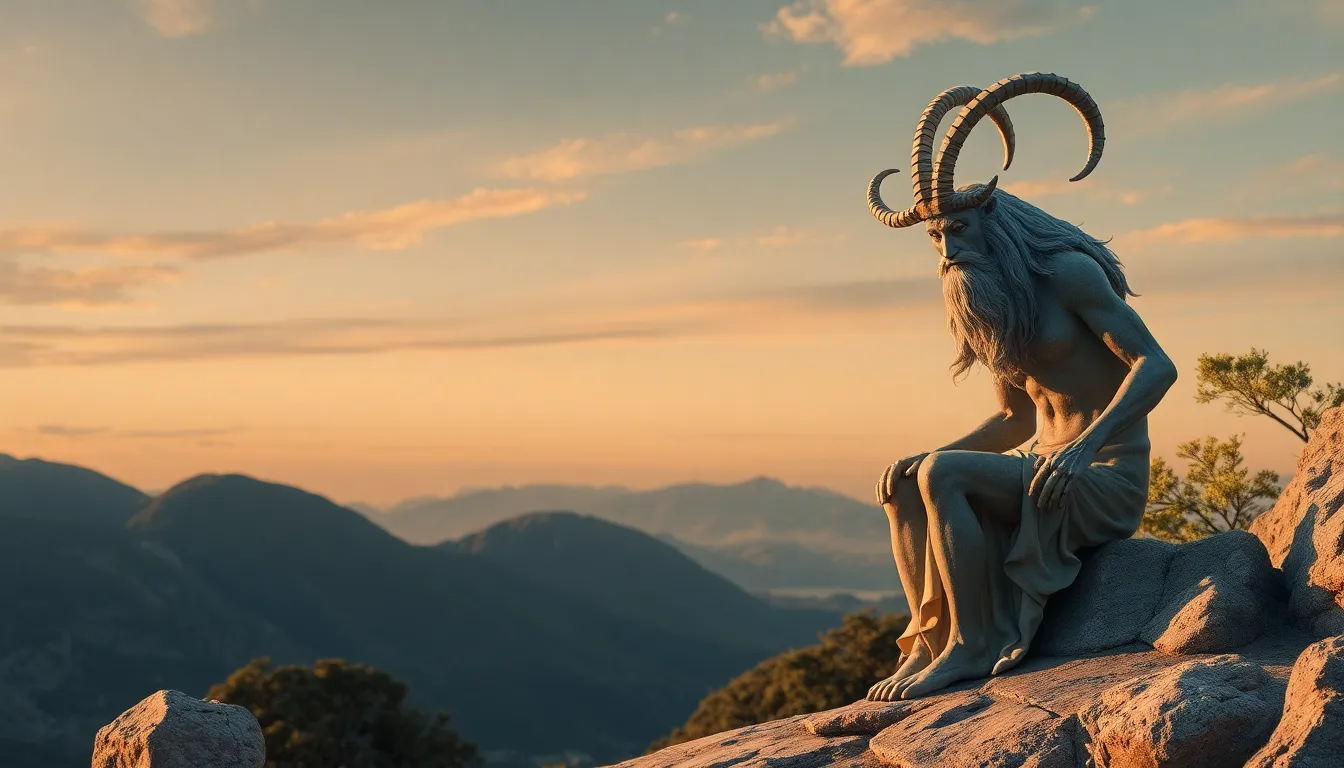The Satyr’s Connection to Folklore and Oral History
I. Introduction to Satyrs
In the rich tapestry of Greek mythology, satyrs are fascinating creatures often depicted as part human and part goat. Characterized by their pointed ears, tails, and legs resembling those of goats, satyrs embody the wild, untamed aspects of nature. They are typically associated with revelry, music, and the carefree pursuit of pleasure.
Across various ancient cultures, satyrs symbolize different aspects of life, including fertility, ecstasy, and the primal urges that drive humanity. As we delve into the world of satyrs, this article aims to explore their roots in folklore and oral history, shedding light on their enduring legacy.
II. Historical Origins of Satyrs
Satyrs originate primarily from ancient Greek mythology, where they served as companions to Dionysus, the god of wine, fertility, and festivity. These creatures participated in Dionysian rituals, often engaging in wild dances and music, reflecting the ecstatic nature of their divine patron.
The evolution of the satyr figure can be traced through ancient art and literature, where they were depicted as playful and mischievous beings that embodied the spirit of nature. Over time, satyrs have evolved from simple mythological figures to complex symbols of human nature and desire.
III. Satyrs in Folklore Across Cultures
Satyrs are not unique to Greek mythology; they share similarities with various creatures found in global folklore. For instance:
- Fauns: In Roman mythology, fauns are similar to satyrs and are often depicted as gentle and nurturing, in contrast to the more boisterous satyrs.
- Puca: In Irish folklore, the Puca is a shape-shifting creature that can be both benevolent and malevolent, often associated with the wild and untamed aspects of nature.
Regional variations of satyr-like figures demonstrate the significance of these beings across cultures. For instance, in Slavic folklore, the Leshy is a forest spirit that protects the woods and can appear in various forms, including that of a goat or a human. Such variations reflect the cultural contexts that shape the portrayal of similar beings, often emphasizing the duality of nature as both nurturing and chaotic.
IV. The Role of Oral History in Preserving Satyr Legends
Oral storytelling has played a crucial role in the preservation of satyr legends throughout history. In ancient societies, tales of satyrs were shared in communal gatherings, passed down through generations as a way of connecting people with their cultural heritage.
Some notable examples of satyr stories that have been preserved through oral tradition include:
- The story of Silenus, a satyr and companion of Dionysus, who often found himself in humorous predicaments due to his drunkenness and wisdom.
- Folktales that involve satyrs leading humans into the wilderness, symbolizing the lure of nature and the dangers that lie within it.
The impact of oral history is profound, as it allows for the evolution of satyr narratives, adapting them to the values and beliefs of each new generation while keeping the core elements intact.
V. Satyrs in Literature and Art
Satyrs have been richly represented in classical literature, with authors such as Homer and Ovid depicting them in various contexts. In the Odyssey, for instance, satyrs are mentioned as part of the mythical landscape inhabited by gods and other supernatural beings.
During the Renaissance, the fascination with classical themes revived interest in satyrs, inspiring artists like Peter Paul Rubens and Francisco Goya to create works that celebrated their wild, hedonistic nature.
In modern literature, satyrs continue to inspire authors and creators, with adaptations found in fantasy novels, graphic novels, and films, showcasing the versatility of these characters in contemporary storytelling.
VI. Satyrs and Their Symbolic Meanings
The satyr serves as a multifaceted symbol, representing various themes including:
- Nature: Satyrs are often seen as embodiments of the natural world, reflecting its beauty and chaos.
- Fertility: As companions of Dionysus, they symbolize fertility and the bountiful aspects of life.
- Hedonism: Satyrs are associated with the pursuit of pleasure and the indulgence of human desires.
These symbolic meanings resonate in modern folklore and culture, where satyrs remind us of our connection to nature and the instinctual drives that shape our lives.
VII. The Revival of Satyr Myths in Popular Culture
In contemporary media, satyrs have experienced a revival, appearing in various films, TV shows, and literature. Notable examples include:
- The depiction of satyr-like characters in fantasy series such as American Gods and Percy Jackson.
- Films that explore mythological themes, showcasing satyrs in new and engaging narratives.
The role of fantasy and folklore in modern storytelling continues to thrive, with fan communities actively engaging with satyr mythology, creating a space for discussion and reinterpretation of these ancient figures.
VIII. Conclusion
In summary, the significance of satyrs in folklore and oral history is profound, reflecting humanity’s intricate relationship with nature and the primal instincts that drive us. Through the exploration of their historical origins, representations in literature and art, and their revival in popular culture, we see the enduring legacy of satyrs in cultural narratives.
Studying mythical creatures like satyrs allows us to gain insights into our own desires, fears, and the timeless themes that connect us across generations. As we continue to explore such figures, we enrich our understanding of mythology and its relevance in our modern world.




